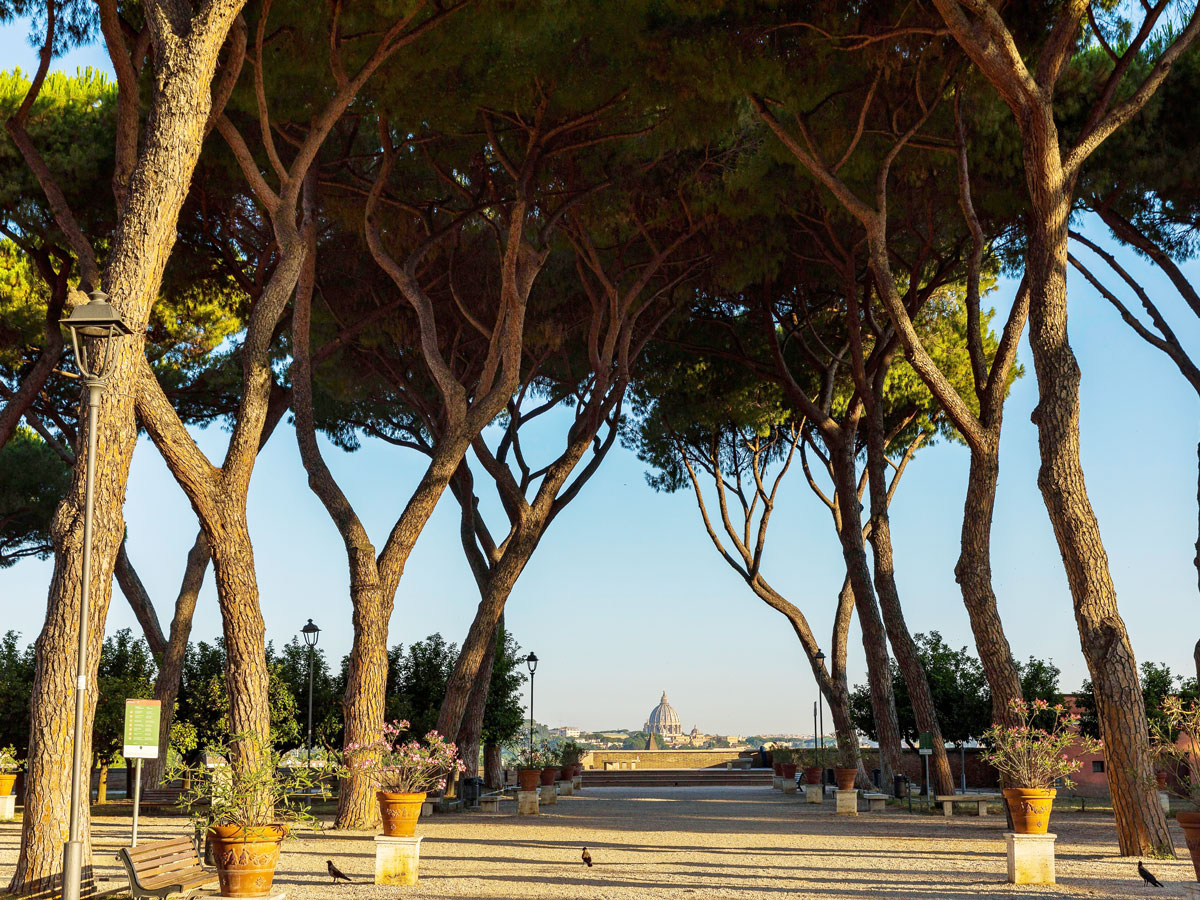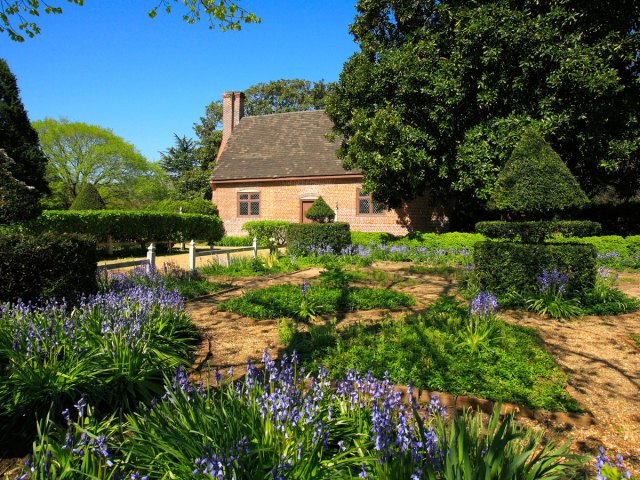
Though most travelers come to Rome to visit well-known attractions such as the Colosseum, Pantheon, Spanish Steps and Trevi Fountain, they’ll often have to fight the crowds to do so. While these historical places are popular for good reason, the good news is that there are plenty of under-the-radar sights to discover in the Eternal City that don’t get the same overwhelming flood of visitors. Here are seven fantastic ideas if you’re ready to get off the beaten path in Rome.
Before You Go
Before you visit Rome, it can be incredibly useful to learn some of the local language. That’s where Babbel can help. Their lessons can help you master Italian and other languages such as French, Spanish, or German in as little as 10 minutes a day. Say “buongiorno!” to all of Rome’s hidden wonders and see how easy it is to learn a new language, with Babbel.
Parco degli Acquedotti

In ancient times, aqueducts were a vital part of Rome’s infrastructure, carrying water to the villas of the wealthy as well as to public spas and fountains. The 600-acre Parco degli Acquedotti (which translates to Park of the Aqueducts) in southeast Rome was where many of these aqueducts intersected, playing a vital role in ancient Rome’s water network.
Today, only some of the structures are visible — some were underground conduits, while others have partially collapsed over the centuries. One of the seven aqueducts in the park, the Felix Aqueduct, is still functioning, while Claudius Aqueduct, built between 38 and 52 CE, is the most intact. The park not only contains a fascinating history but is one of the most impressive green spaces in the city, forming part of the Parco Regionale Suburbano dell’Appia Antica.
Isola Tiberina
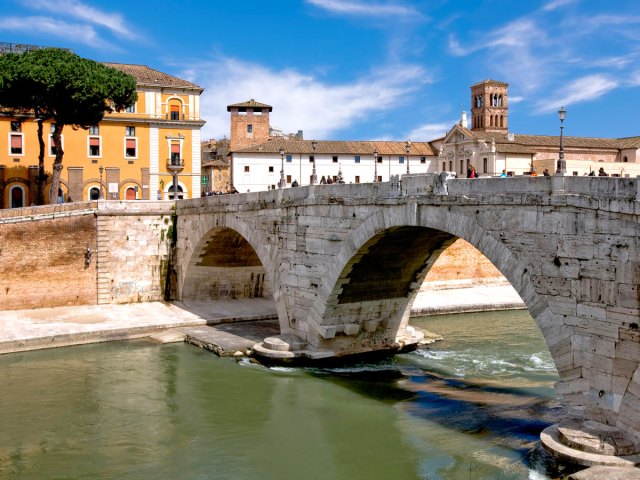
Forget the honking of horns and the hubbub of the city as you cross the Tiber River to reach Isola Tiberina (Tiber Island). In summer, the leafy trees that line the banks of the river create a green barrier, making this the ideal spot to take refuge from the frenzy of activity on either side. The island contains several notable landmarks, including La Colonna Infame (“The Infamous Column,” named because debtors used to be publicly humiliated there) and the Church of San Bartolomeo Apostolo, dating to 998 CE.
However, most importantly, this is where you’ll find the Fatebenefratelli Hospital. The hospital’s name translates to the “Do Good Brothers,” which was particularly apt during World War II. Still a functioning hospital, it was where approximately 100 Jewish people were saved from persecution by doctoring medical records to show they had a contagious and fatal, but fictitious, disease called Il morbo di K.
Quartiere Coppedè
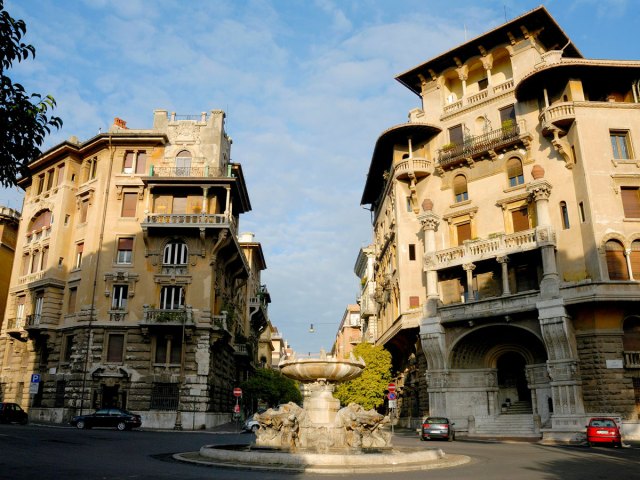
Quartiere Coppedè (Coppedè Quarter) dates to the 1920s, when artist Gino Coppedè designed a neighborhood that has since become famous for its quirky appearance. The artist had free rein to use his imagination, and as a result, the area is a delightful mix of architectural styles, including Art Nouveau.
Here, you’ll come across palaces, fountains, towers, and arches that draw their inspiration from Venice and Florence, as well as Rome. Local lore claims that the Beatles once took an impromptu dip in the Fontana delle Rane (Fountain of the Frogs) — the fairy-tale centerpiece of Piazza Mincio which gets its name from the frogs that embellish it. Also be sure to seek out the Villino delle Fate (Villa of the Fairies) and the spider-adorned Palazzina del Ragno.
Giardino degli Aranci
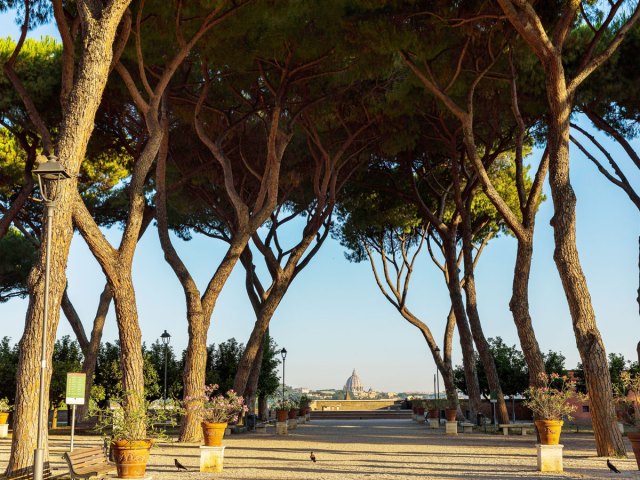
The nickname Giardino degli Aranci translates to “Orange Garden,” named after the bitter oranges which grow there. This lovely garden, perched high on Aventine Hill, is officially named Parco Savello in honor of the wealthy family who once owned it. The Savellis built a castle here in the 13th century on top of an even earlier one, whose ruined walls are still visible today.
However, the Giardino degli Aranci is a much later addition, dating from the 1930s. At the entrance to the garden in Piazza Pietro D’Illiria, visitors will find a fountain featuring a monumental marble mask. It was moved here after gracing two other fountains, one at the Campo Vaccino cattle market and the other beside the Tiber River. Many also come here for the chance to peer through the Aventine Keyhole. Located in a villa in the Piazza Cavalieri di Malta, it offers a perfectly framed view of St Peter’s in Vatican City.
Teatro di Marcello

Like Rome’s Colosseum, the Teatro di Marcello (Theater of Marcellus) was built as an open-air theater, but it predates its more famous cousin by almost a century. Emperor Augustus oversaw its completion and named it after his late nephew Marcus Claudius Marcellus, who had been destined to become his successor. The structure boasted multiple tiers of arches which would have enabled the 17,500-capacity venue to be filled quickly. Originally, its façade was completely clad in white travertine marble. In later centuries, ownership of the theater passed to some of the richest families in the city, who fortified and adapted it into the palace you see today.
Cinecittà Film Studios
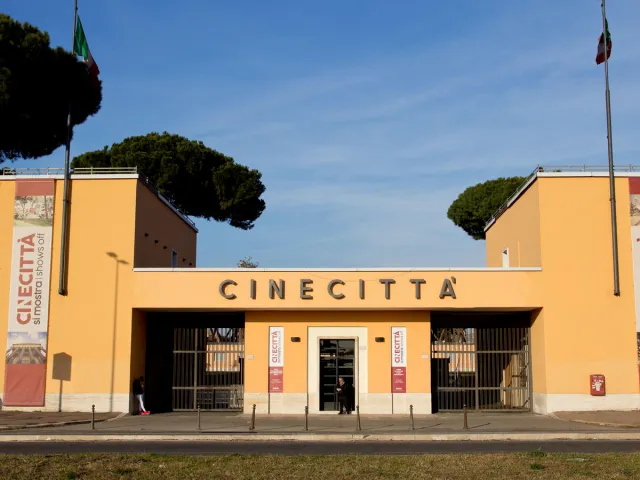
More than 3,000 movies have been made at Rome’s Cinecittà film studios, many of which went on to win Academy Awards. Epics such as Ben Hur, Cleopatra, and La Dolce Vita — along with modern classics like Martin Scorcese’s Gangs of New York and Wes Anderson’s The Life Aquatic — have all been filmed here. Fascist leader Benito Mussolini green-lit the site in the 1930s, though it suffered significant bomb damage during World War II. Aware that it could provide much-needed revenue, the postwar government authorized repairs. By the 1950s, the place had become synonymous with Hollywood glitz and glamor. It’s still a working studio, but guided tours are available.
Villa Torlonia
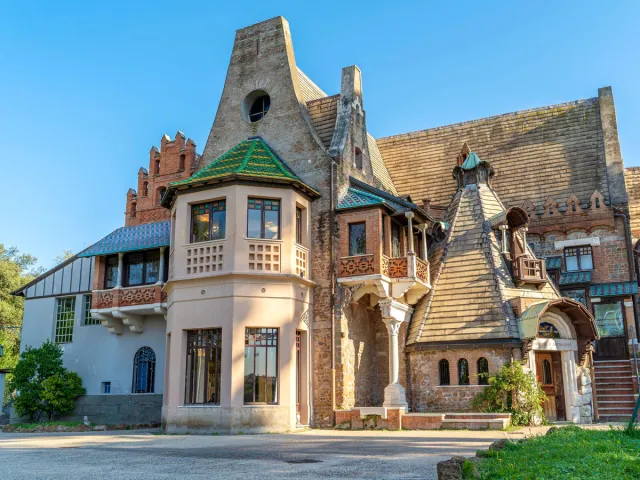
Villa Torlonia is another off-the-radar Rome attraction with a fascinating history. At the start of the 19th century, a wealthy banker named Giovanni Torlonia commissioned a grand home to grace a plot of land he had bought on the outskirts of Rome. He called it Casino Nobile. After his death, his heirs added a slew of follies and ruins, including a fake temple and a Swiss-inspired chalet called Casina delle Civette (Little House of the Owls). After falling into disrepair after World War II, the estate was bought by the city and renovated. These days, it comprises an underrated public park and several museums.
More from our network
Daily Passport is part of Optimism, which publishes content that uplifts, informs, and inspires.






